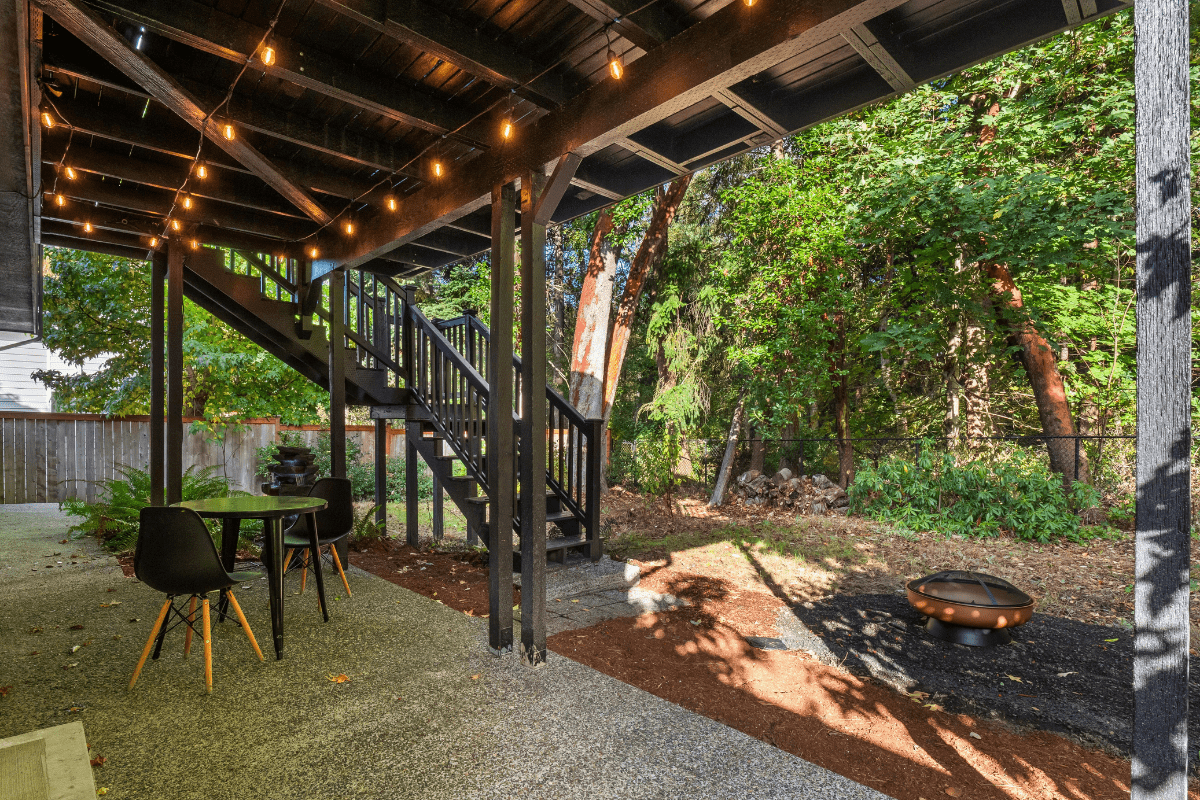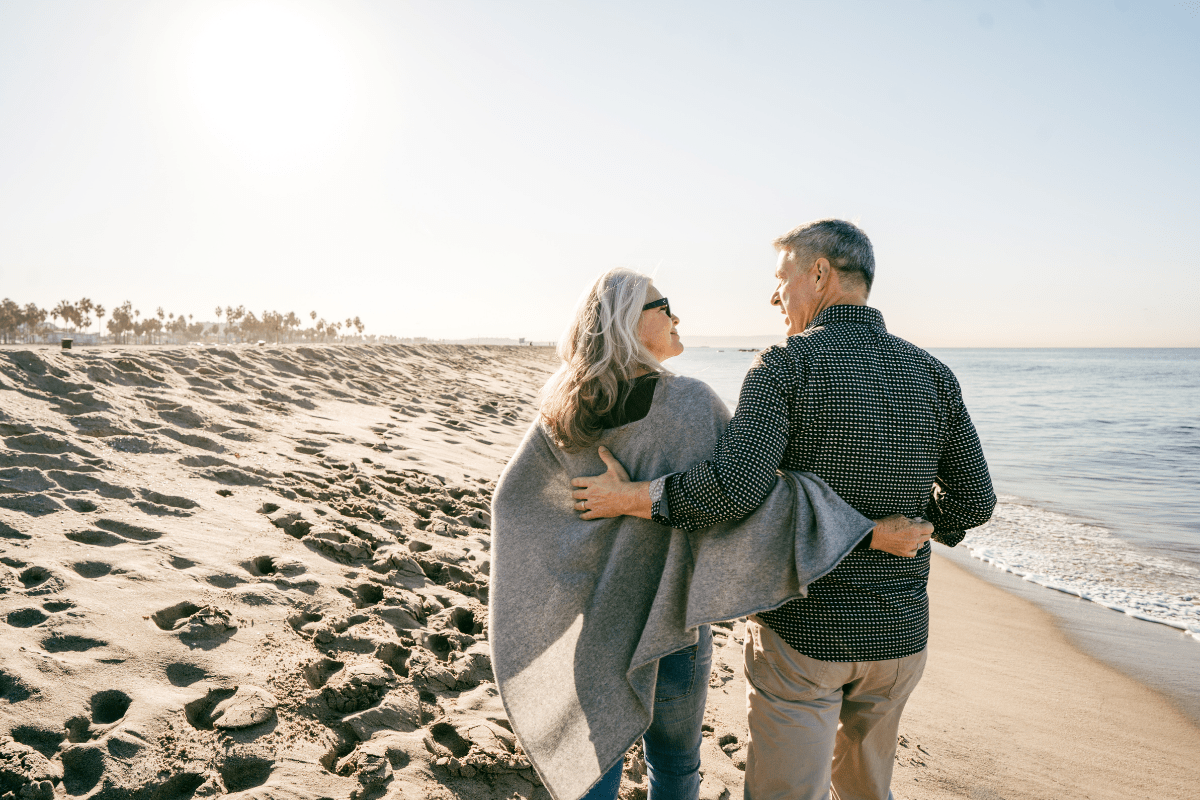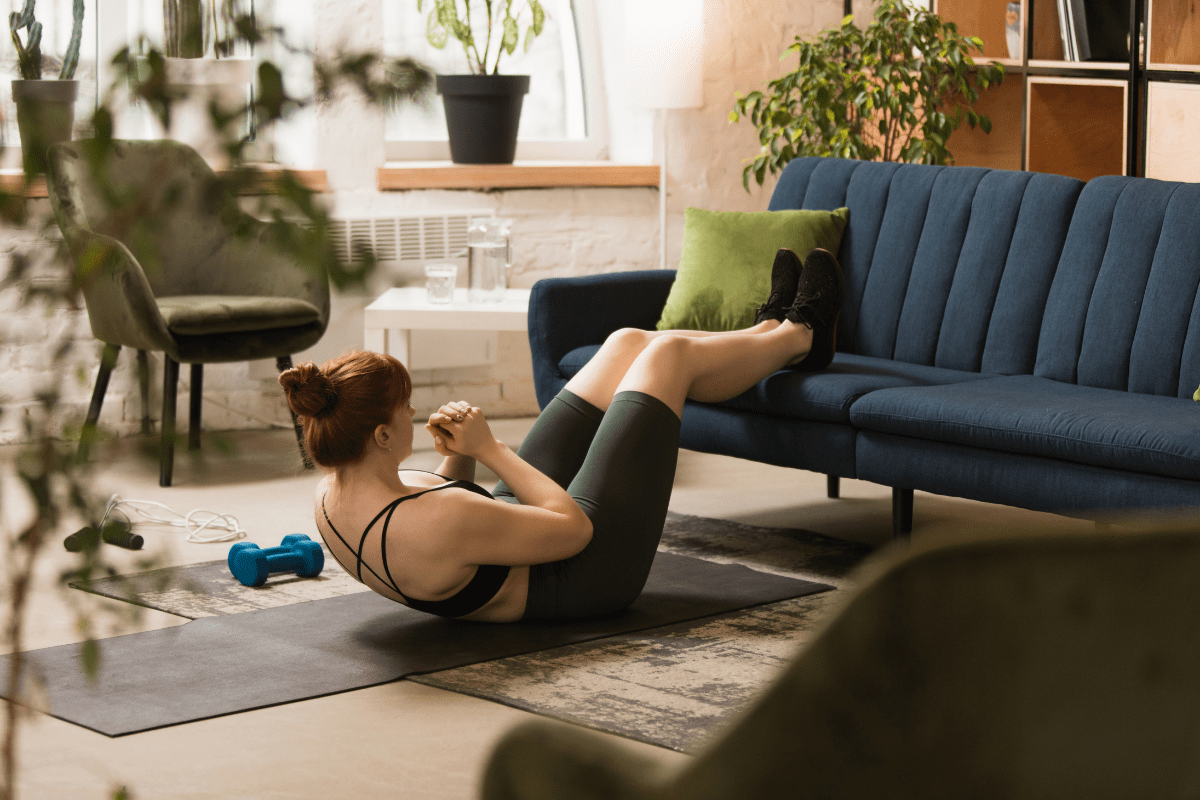Nothing feels quite as wasteful as staring at your beautiful patio furniture through the window in February, knowing it won't see action for another three months. You spent good money on that outdoor dining set, and now it's basically expensive lawn art until spring decides to show up. But what if I told you that with some smart planning and the right upgrades, you could transform your outdoor space into a year-round retreat that actually gets used in all four seasons?
Foundation elements for maximum year-round use
Before you start shopping for heaters and weather-resistant cushions, you need to nail down the basics that'll make your space usable regardless of what Mother Nature throws at you. Think of this as building a solid foundation… literally and figuratively.
Structural weather protection
This is priority number one, folks. A pergola with retractable canopies gives you instant relief from both blazing sun and sudden downpours. You can open them up for stargazing and close them when the weather gets moody, which let's be honest, happens more often than we'd like.
Screened-in porches and three-season rooms are the ultimate upgrade if you've got the budget. They create an enclosed comfort zone that feels outdoors but keeps the bugs, wind, and precipitation at bay. Even simple windbreaks using privacy screens or strategically placed plantings can make a shocking difference in how comfortable your space feels on blustery days.
If you're working with an existing patio, roof extensions and overhangs are often easier to add than you'd think. Check out installation guides from major retailers to see what's actually possible with your current setup.
All-weather flooring solutions
Your flooring choice can make or break the year-round usability of your space. Composite decking handles temperature swings like a champ without the warping drama that natural wood can bring. It's one of those "pay once, enjoy forever" investments that actually lives up to the hype.
Permeable pavers are brilliant for drainage and prevent that lovely ice rink effect that regular concrete can create in winter. Nobody wants to slip and slide their way to the patio chair. Don't overlook outdoor rugs designed for all-weather use either… they add warmth and style while providing actual insulation from cold surfaces.
Heating solutions for cool weather extension
Here's where the magic really happens. Good heating can extend your outdoor season by months, not just weeks. And no, you don't need to install a full HVAC system in your backyard.
Heating options by effectiveness and cost
Fire pits and fire tables are the crowd-pleasers of outdoor heating. They provide ambiance, localized warmth, and give everyone something to gather around instead of huddling in their jackets. A quick rule of thumb is to have 20 BTUs per square foot so you can quickly multiply your square footage by 20 to get the number of BTUs needed to heat your patio. For a 500-square-foot space, you're looking at around 10,000 BTUs.
Patio heaters come in three main flavors: propane (portable and instant heat), electric (great for covered areas with power access), and natural gas (continuous supply but requires professional installation). Most hanging patio heaters are electrically powered and range in power from under 10,000 BTUs to 30,000 BTUs.
Infrared heaters are sneaky effective for targeted warming zones. They heat objects and people directly rather than trying to warm all the air, which makes them surprisingly efficient for open spaces. Think of them as the sniper rifles of outdoor heating.
Fuel and installation considerations
Propane wins for flexibility. You can move heaters around, there's no electrical requirements, and you get instant heat. The downside? Tank refills and slightly higher operating costs over time.
Natural gas offers continuous supply and lower operating costs, but you're committed to permanent installation locations. Electric heating works great for covered spaces where you already have electrical access, plus it's environmentally friendlier with zero on-site emissions.
To prevent fire hazards, place patio heaters away from flammable materials such as fabrics and foliage. Check local codes for clearance distances before you buy… nobody wants a surprise visit from the fire marshal.
Use a BTU calculator to figure out exactly how much heating power you need for your specific space and climate.
Cooling strategies for hot weather comfort
Heating gets all the attention, but cooling is equally important for year-round usability. After all, a 95-degree patio isn't exactly inviting either.
Shade creation methods
Retractable awnings and shade sails give you flexible coverage when you need it. The key word here is "flexible"… permanent shade is great until you want some vitamin D on a cloudy day.
Cantilever umbrellas are game-changers for large areas because they don't have that annoying center post taking up precious table space. You can actually fit people around your dining table without playing musical chairs.
Don't underestimate living shade from strategically planted trees and climbing plants. It takes longer to establish but provides natural cooling, improves air quality, and looks way better than any manufactured solution. Plus, trees don't break in windstorms like umbrellas do.
Ventilation and air movement
Ceiling fans rated for outdoor use make a huge difference in covered areas. The key word here is "rated"… indoor fans will die a quick death outside, and you'll be left with an expensive ceiling decoration.
Natural airflow design using strategic openings and barriers can create pleasant breezes without any electrical requirements. It's basically free air conditioning if you do it right.
Misting systems can drop ambient temperatures by 20-30 degrees through evaporative cooling, though they work best in dry climates. In humid areas, they might just make you feel like you're sitting in a steam room.
All-weather furniture and materials selection
This is where a lot of people get tripped up. Not all "outdoor" furniture is created equal, and the wrong choice will have you replacing pieces every few years like you're running a furniture rental business.
Furniture materials that actually last
Aluminum frames with weather-resistant cushions hit the sweet spot of durability and comfort. They're rust-free, lightweight for rearranging, and hold up to temperature swings without getting brittle or cracking.
Teak and other weather-resistant woods look fantastic and age beautifully, but be honest about your maintenance commitment. Generally sealants need to be reapplied every few years depending on weather conditions and wear and tear. If you're not into annual furniture maintenance rituals, aluminum might be your best friend.
High-quality resin wicker has come a long way from the cheap plastic stuff that screams "budget patio." Look for furniture that's UV-stabilized and has thick, consistent weaving that won't unravel in the first strong wind.
Cushion and textile solutions
Most outdoor cushions can be cleaned using a mixture of mild soap and warm water. Look for quick-dry foam that resists mold and mildew, paired with removable, machine-washable covers. Trust me, you'll thank yourself later when someone spills wine on your cushions.
Storage considerations matter more than you might think:
- Built-in waterproof compartments for easy access
- Quick-drain foam prevents soggy cushion syndrome
- Fade-resistant materials rated for UV exposure
- Removable covers for washing convenience
For detailed care instructions that'll keep your furniture looking good for years, check out comprehensive maintenance guides from major furniture retailers.
Seasonal adaptation strategies
The secret to year-round outdoor living isn't having summer furniture that survives winter… it's adapting your space as seasons change. Think of it like changing your wardrobe, but for your patio.
Spring setup and maintenance
Start with a deep cleaning checklist for furniture and surfaces. Our go-to trick for cleaning outdoor furniture? Pressure wash all of it. Just be careful with cushions and fabrics… pressure washing can turn your nice cushions into expensive confetti.
Gradually place furniture based on weather patterns rather than dumping everything outside on the first 65-degree day. Your heating systems need preparation and safety checks too, especially if they've been dormant all winter collecting spider webs.
Plant selection for three-season visual interest keeps your space looking intentional rather than seasonal. Think about what looks good in spring, summer, and fall rather than just peak summer Instagram moments.
Summer optimization techniques
Deploy shade and activate cooling systems before you actually need them. Nobody wants to install an umbrella in 90-degree heat while sweat drips into their eyes.
Swap to lightweight, breathable fabrics for cushions and throws. Water features provide cooling effects and ambient sound that masks neighborhood noise… including your neighbor's dog who apparently has opinions about everything.
Integrated insect control measures become crucial as temperatures rise. Nobody wants to share their outdoor dinner party with mosquitoes who weren't invited but show up anyway.
Fall and winter transitions
Layer up with weather-resistant blankets and throws that can handle morning dew without turning into soggy messes. Switch lighting to warmer tones using string lights and lanterns… it creates a cozy atmosphere as daylight hours shrink faster than your patience with early sunsets.
Seasonal decorations that withstand weather keep your space looking intentional through the colder months. Winterization varies by climate, but the basics include:
- Protecting furniture from ice and snow
- Draining water features to prevent freeze damage
- Securing loose items before winter storms
- Covering or storing delicate pieces
Weather protection and smart storage
Even the best outdoor furniture benefits from protection during severe weather or extended non-use periods. Think of it as insurance for your investment.
Protective measures
Custom-fit furniture covers work better than generic options but cost more upfront. The investment usually pays off in extended furniture life though. Retractable elements like awnings and screens give you weather flexibility without permanent commitment to always being covered.
Proper drainage and grading around outdoor spaces prevents water damage and ice formation. Wind-resistant design principles for furniture placement can prevent that heart-stopping moment when you watch your umbrella become a projectile heading for your neighbor's window.
Storage solutions
Built-in storage benches and ottomans provide dual functionality… seating when you need it, storage when you don't. It's like having a transformer, but for furniture.
Weatherproof deck boxes and outdoor cabinets keep cushions, tools, and seasonal items accessible but protected. Vertical storage systems maximize space efficiency, especially important for smaller patios where every square foot counts.
Seasonal rotation systems for cushions and décor keep things fresh without requiring a storage unit the size of your actual house.
Lighting for extended outdoor hours
Good lighting transforms outdoor spaces from daytime-only to usable well into the evening, regardless of season. It's the difference between a space that's functional and one that's actually inviting.
Layered lighting design
Think about lighting the same way you'd light an indoor room, with multiple sources serving different purposes:
- Ambient lighting with string lights for atmosphere
- Task lighting for dining and reading areas
- Accent lighting for landscaping features
- Safety lighting for pathways and steps
Nobody wants to navigate their patio like they're exploring a cave with a flashlight.
Power and technology integration
Solar lighting has improved dramatically but still has limitations in consistently cloudy climates or heavily shaded areas. It's great when it works, frustrating when it doesn't.
Low-voltage wired systems provide reliable illumination but require more installation work upfront. Weather-resistant outlets and switches are essential for any electrical outdoor setup… water and electricity still don't play well together.
Smart lighting controls and programmable timers let you set "scenes" for different activities and automatically adjust for seasonal daylight changes. Use online lighting calculators to determine how much illumination you actually need rather than guessing.
Climate-specific adaptations
Your regional climate should drive your entire approach to year-round outdoor living. What works in Phoenix won't work in Portland, and vice versa.
Desert climates need to prioritize shade structures and evaporative cooling. The temperature swings can be dramatic, so furniture that handles thermal expansion without cracking becomes crucial.
Humid climates require focus on ventilation and mold prevention materials. Everything takes longer to dry, so quick-drain and mildew-resistant materials become essential rather than optional.
Cold climates should emphasize insulation and efficient heating systems. Thermal mass from stone or concrete can help moderate temperature swings naturally.
Coastal areas face salt air and wind resistance challenges that can corrode hardware faster than you'd expect. Mountain regions deal with intense UV and extreme temperature swings that can age furniture quickly.
Budget-friendly implementation strategies
You don't need to spend a fortune to create a year-round outdoor space, but you do need to be strategic about where you invest first.
DIY options with biggest impact
Building simple pergolas and shade structures with basic tools can save thousands compared to professional installation. There are plenty of DIY guides available that break down the process into manageable steps.
Creating effective windbreaks with plants or screens provides immediate comfort improvement for minimal cost. Weatherproofing indoor furniture for outdoor use can bridge the gap while you save for proper outdoor pieces.
Making custom outdoor cushions and protective covers costs a fraction of buying them retail, and you get exactly the colors and sizes you want.
Phased implementation approach
Think long-term and build your space over several seasons rather than trying to do everything at once:
- Year 1: Basic weather protection and essential seating
- Year 2: Add heating or cooling based on climate
- Year 3: Upgrade materials and add comfort features
- Year 4: Fine-tune with storage and convenience upgrades
Budget planning for maintenance and seasonal improvements prevents that overwhelming feeling of trying to create the perfect outdoor space overnight.
Integration with indoor living spaces
The best year-round outdoor spaces feel like natural extensions of your home rather than separate destinations that require a mindset shift to enjoy.
Sliding glass doors and moveable wall systems blur the line between inside and outside in the best possible way. Consistent flooring materials and color schemes create visual continuity that makes everything feel intentional.
Shared heating and cooling systems can be more efficient than separate outdoor units, especially for covered or enclosed outdoor areas. Design aesthetic continuity between spaces makes everything feel well-planned rather than like an afterthought.
For inspiration on seamless transitions, browse design galleries that showcase indoor-outdoor living concepts actually implemented in real homes.
Creating a year-round outdoor living space isn't about battling the weather… it's about working with it intelligently. Start with good bones like weather protection and quality materials, add comfort systems as budget allows, and adapt your space seasonally rather than fighting for summer conditions year-round.
The goal isn't to recreate your living room outside… it's to create a space that's so appealing in every season that you actually want to use it. And trust me, once you're sipping coffee on your heated patio in February while your neighbors are stuck inside, you'll wonder why you didn't do this sooner. Your future self will thank you for making the investment in turning that expensive lawn art back into actual, usable living space.




